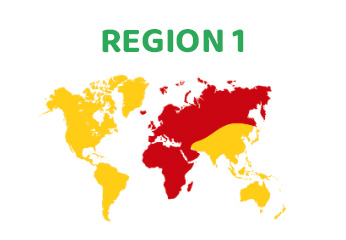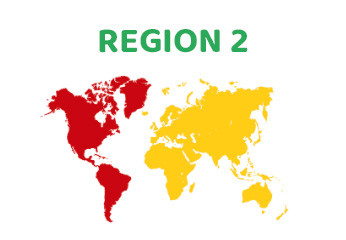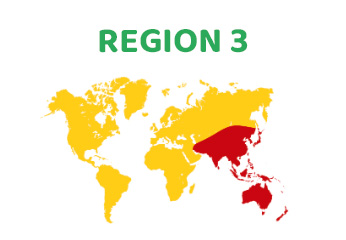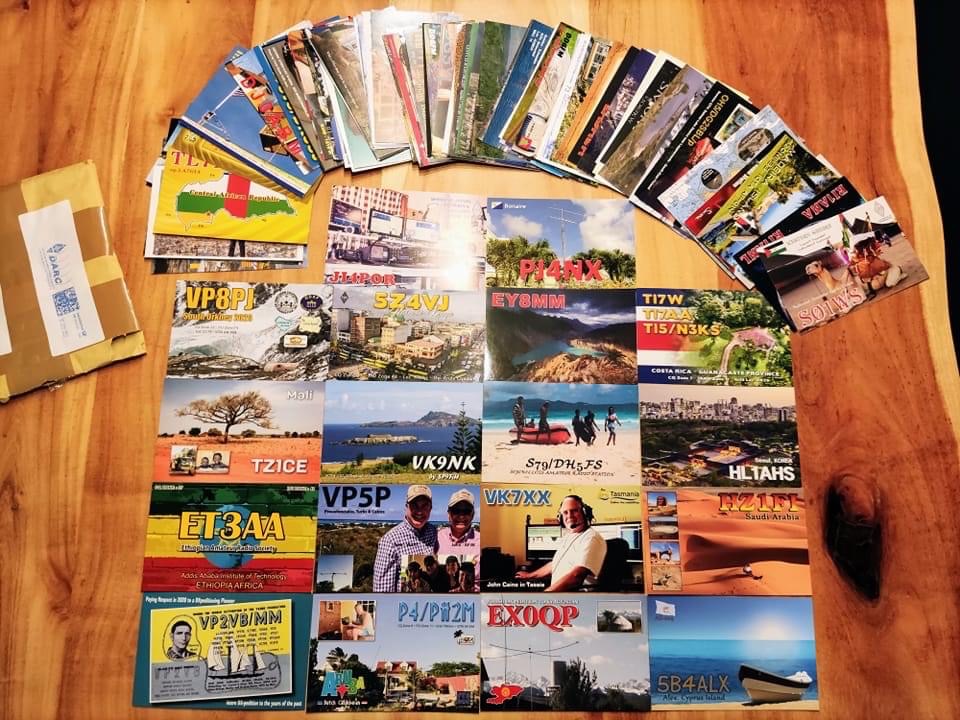FAQ
Some common Amateur Radio (Ham Radio) terms explained.
What is Amateur Radio, also called Ham Radio?
Amateur Radio (ham radio) is a popular hobby and service that brings people, electronics and communication together. People use ham radio to talk across town, around the world, or even into space, all without the Internet or cell phones. It’s fun, social, educational, and can be a lifeline during times of need.
You can set up a ham radio station anywhere! In a field, at a club station or at home.
Although Amateur Radio operators get involved for many reasons, they all have in common a basic knowledge of radio technology and operating principles, to obtain a radio amateur license you must pass an exam to operate on radio frequencies known as the “Amateur Bands.” If you are curious about more, take a look here (Dutch) or even Google learns you a lot over here.
The best ways to learn about Amateur Radio is to talk to hams face-to-face. Hams take pride in their ability to “Elmer” (teach) newcomers the ropes to get them started in the hobby. Please contact your local government agency or even a local Ham Radio club in your area for specific regulations in your country.
For Belgium you can contact:
- Belgisch Instituut voor postdiensten en telecommunicatie (B.I.P.T)
- Koninklijke Unie van de Belgische Zendamateurs vzw (UBA)
The videos below also give you a pretty clear insight into our beautiful and fascinating electronics and communication hobby.
History of Amateur Radio, also called Ham Radio
The history of amateur radio, dates from the dawn of radio communications, with published instructions for building simple wireless sets appearing at the beginning of the twentieth century. Throughout its history, amateur radio enthusiasts have made significant contributions to science, engineering, industry, and social services. Research by amateur radio operators has founded new industries, built economies, empowered nations, and saved lives in times of emergency.
Beginnings
Amateur radio came into being after radio waves (proved to exist by Heinrich Rudolf Hertz in 1888) were adapted into a communication system in the 1890s by the Italian inventor Guglielmo Marconi. In the late 19th century there had been amateur wired telegraphers setting up their own interconnected telegraphic systems. Following Marconi’s success many people began experimenting with this new form of “wireless telegraphy“. Information on “Hertzian wave” based wireless telegraphy systems (the name “radio” would not come into common use until several years later) was sketchy, with magazines such as the November, 1901 issue of Amateur Work showing how to build a simple system based on Hertz’ early experiments. Magazines show a continued progress by amateurs including a 1904 story on two Boston, Massachusetts 8th graders constructing a transmitter and receiver with a range of eight miles and a 1906 story about two Rhode Island teenagers building a wireless station in a chicken coop. In the US the first commercially produced wireless telegraphy transmitter / receiver systems became available to experimenters and amateurs in 1905.[1] In 1908, students at Columbia University formed the Wireless Telegraph Club of Columbia University, now the Columbia University Amateur Radio Club. This is the earliest recorded formation of an amateur radio club, collegiate or otherwise.[7] In 1910, the Amateurs of Australia formed, now the Wireless Institute of Australia.
The rapid expansion and even “mania” for amateur radio, with many thousands of transmitters set up by 1910, led to a wide spread problem of inadvertent and even malicious radio interference with commercial and military radio systems. Some of the problem came from amateurs using crude spark-transmitters that spread signals across a wide part of the radio spectrum. In 1912 after the RMS Titanic sank, the United States Congress passed the Radio Act of 1912 which restricted private stations to wavelengths of 200 meters or shorter (1500 kHz or higher).[9] These “short wave” frequencies were generally considered useless at the time, and the number of radio hobbyists in the U.S. is estimated to have dropped by as much as 88%. Other countries followed suit and by 1913 the International Convention for the Safety of Life at Sea was convened and produced a treaty requiring shipboard radio stations to be staffed 24 hours a day. The Radio Act of 1912 also marked the beginning of U.S. federal licensing of amateur radio operators and stations. The origin of the term “ham”, as a synonym for an amateur radio operator, was apparently a taunt by professional telegraphers.
Other useful resources:
- History of radio
- Broadcasting and Its History (Wyoming LLC & Trust Attorney)
- All about ham radio for beginners (AAA State of Play)
Source: https://en.wikipedia.org
Amateur Radio Band Plans
In Amateur Radio (HAM radio) there are agreements about frequency use and between which frequencies which modes may be used.
Below is an overview of allowed frequencies for the three global regions.
Ham Radio RST signal report system?
The R-S-T system is used by amateur radio operators, shortwave listeners, and other radio hobbyists to exchange information about the quality of a radio signal being received. The code is a three digit number, with one digit each for conveying an assessment of the signal’s readability, strength, and tone. The code was developed in 1934 by Amateur radio operator Arthur W. Braaten, W2BSR, and was similar to that codified in the ITU Radio Regulations, Cairo, 1938.
Readability
The R stands for “Readability”. Readability is a qualitative assessment of how easy or difficult it is to correctly copy the information being sent during the transmission. In a Morse code telegraphy transmission, readability refers to how easy or difficult it is to distinguish each of the characters in the text of the message being sent; in a voice transmission, readability refers to how easy or difficult it is for each spoken word to be understood correctly. Readability is measured on a scale of 1 to 5.
Strength
The S stands for “Strength”. Strength is an assessment of how powerful the received signal is at the receiving location. Although an accurate signal strength meter can determine a quantitative value for signal strength, in practice this portion of the RST code is a qualitative assessment, often made based on the S meter of the radio receiver at the location of signal reception. “Strength” is measured on a scale of 1 to 9.
Tone
The T stands for “Tone” and is measured on a scale of 1 to 9. Tone only pertains to Morse code and other digital transmission modes and is therefore omitted during voice operations. With modern technology, imperfections in the quality of transmitters’ digital modulation severe enough to be detected by human ears are rare.
Ham Radio International Morse Code
Created in the 1830s by Samuel F.B. Morse, it revolutionized long-range communications. In its heyday, Morse code was a common, standardized method of communication used by the military, amateur radio operators, translators and others and gave anyone the ability to converse directly with someone over great distances, using as little bandwidth as possible.
These properties were the reason it was used so heavily in the military, as it provided an efficient way to get information to and from the battlefield. While it may not be used in practice as much today, up until 1991, in order to get an entry-level ham license, you were required to demonstrate you could copy Morse code messages. Because Morse proficiency is not required these days, many amateurs today don’t bother learning the skill.
Additionally, computers and other electronics now can send and receive Morse code messages without the knowledge to translate the dots and dashes. However, there are specific devices that can help send morse code messages that are still in use today.
International Phonetic Alphabet
Amateur radio operators are required to identify themselves over the air by their alphanumeric call signs, so its no wonder that many hams may know one another only by the sign instead of an actual name or handle. However, identifying the call signs correctly can be a challenge, especially when the letters in a sign sound similar to one another. For instance, the letter “M” sounds similar to the letter “N”, “B” may sound like “D”, and so forth. This can be particularly troublesome if the transmission is weak or encounters a lot of interference.
To avoid confusion and clarify communications, amateurs use the phonetic alphabet. It was not a unique concept, as phonetic alphabets were already in use by the British military during World War 1, but it was not worldwide standard. The first known international alphabet was established by the International Telecommunications Union (ITU) in 1926. The ITU made various changes to the alphabet during the next twenty years until a version was adopted by the International Civil Aviation Organization (ICAO) in 1956 and finalized by the ICU. The phonetic alphabet in use today is now a universally recognized standard.
Q-code (most commonly used)
The Q-code is an international set of abbreviations that was created at the beginning of the last century to simplify radiotelegraph communication. Each code is composed by three letters always starting with Q. Each code can be a question if followed by a question mark or an answer (or statement) if not. To avoid confusion, no station call-sign begins with Q. Even if initially designed for telegraphy, it’s also used in voice communications.
Amateur radio international Q-code
Amateur radio operators use a subset of the full international Q-code and they use it extensively still today. In many countries, learning this code is necessary to obtain a Ham Radio license, the exact subset used may slightly vary from country to country. Sometimes Q-codes are used informally with a slightly different meaning.
What is a QSL in Ham Radio?
“QSL” is a telegrapher’s shorthand for: “I acknowledge receipt of your message or transmission”.
A QSL card is a written confirmation or acknowledgment of a contact. So QSL is actually shorthand for “confirmation of contact” in Amateur Radio.
Why Do I Want a QSL Card?
- Courtesy – Sending a QSL card is the final handshake of a contact.
- Awards – QSL cards serve as proof of a two- way contact needed for certain awards.
- Tradition – Exchanging QSL cards has been a long tradition in Ham Radio and it is fun to get cards from other contacted hams.
- Collectors item – Paper QSL-cards are kind of a cool thing, a genuine paper QSL-card can be considered as a collector item.
Nowadays more and more QSL are sent digitally via the Internet, although a genuine paper QSL card stays that cool and sometimes even exotic thing in the palm of your hand.
What is a Ham Radio logbook?
The reasons for logging your amateur activity fall into three categories: legal, operational and personal. Legally, a log of your transmissions would be invaluable in proving your innocence in an interference complaint. Operationally, having a log of past contacts is a resource when filling out that DX QSL card that may have taken months to arrive. Personally, a log is like a personal radio history reminding you of the people and places you’ve talked to, the nets you participated in and contests you worked.
what’s in a Log?
There are two essentials types of information that every log needs: Information about your operation and information about the station you contact. For your operation record the date, frequency, mode and power output; for the contact station record their call sign, the time the contact started and ended, their signal report, name and location (QTH). When you enter the date and time, Universal Coordinated Time (UTC) or Zulu as it is commonly called, is highly recommended. Using UTC eliminates confusion over time zones or daylight saving time, but you must remember to change the date at 0000Z, which could be anywhere from 4 PM to 7 PM local standard time for a North American station. This is an advantage of the computerized logging programs. They keep UTC date and time straight automatically. Of course, you are free to use local time as long as you indicate this clearly in the log. It is unwise to mix UTC and local times and dates together in the log; use one or the other.
Non-essential information that is worth recording is your signal report and that of the contact. You might also want to note comments about the contact’s rig, antenna and quality of their CW, if pertinent. For an interesting contact, you can include notes about your conversation or a QSLing route (many DX and DXpedition stations cannot be QSLed directly but must be QSLed through a QSL bureau or manager). It is also useful to note in the log when you send a QSL and if you receive it. A month after the contact, when you can’t remember if you sent a card to that rare DXpedition that won’t happen again for 10 years, those notes alone will be worth the cost of the logbook or program.
If logging manually during a contest, it is impractical to record the start and end times for each station so these log areas can be used for contest-exchange information.
The hardcopy paper logbook is the traditional keeper of the contacts. A number of computer logging programs are also available. Computer logs are configurable and can automatically keep track of a wide range of information. Many include tools to control modern software controllable rigs. Rotor control is also available with some and many will automatically generate a great circle map from your location to any other point on the globe. Time and date functions for UTC, local and daylight savings are standard but you can also find computer loggers that will display a gray line diagram for helping to plot propagation. There are also a number of logging programs available that are designed specifically to help you during contests. Some are general contesting programs that record generic points and multipliers while keeping track of the basic information. Others are designed with specific contests in mind and aim to help you maximize your score. There are even some that are general contest loggers that have plug-ins available for those contests you are interested in. Contesters almost always use computers to log. Finally, many computer logs support an export function that makes sending your log in to Logbook of The World (LoTW) fast and easy.



